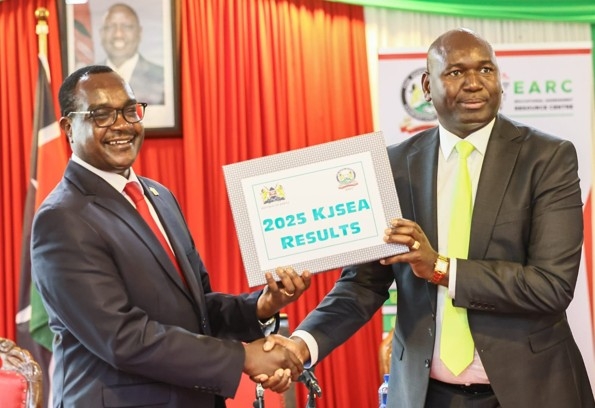Learners in the Competency-Based Curriculum will sit a final examination at the end of primary school, just like KCPE, but the test will not entirely decide their secondary school.
Under the new curriculum, transition from Grade 6 to secondary school will be based on a hybrid model involving a combination of CATs (Classroom Assessment Techniques and KNEC tests.
Learners will be required to take CATs at the end of Grades 4, 5 and 6 that will be part of the final mark the learners get at the end of primary school.
Each CAT will carry 20 per cent of the final mark. This means the three CATs will cumulatively account for 60 per cent of the final score.
The remaining 40 per cent will be from the Kenya National Examination Council exam to be issued administered the end of Grade 6.
This is a system that brings about freedom as opposed to conformity and this is the promise of the CBC.
The cumulative score the learner will get will determine the secondary school they will join.
The details are contained in the report released by President Uhuru Kenyatta on Tuesday at KICC and developed by the CBC Taskforce formed in 2019.
The President on Tuesday termed the new curriculum a turning point in the education system.
"This is a system that brings about freedom as opposed to conformity and this is the promise of the CBC," the President said.
To ensure smooth implementation, he ordered formation of a new state department on implementation of curriculum reforms.
The President said the department will establish comprehensive monitoring and reengineering standards and quality assurance standards to ensure the new curriculum succeeds.
He also instructed the Education ministry to work with the TSC to ensure training of teachers,
The report recommends Junior Secondary School (JSS) Grades 7, 8 and 9 be domiciled in the Secondary Education level.
According to the report, the decision was informed by the lack of capacity, both in human resource and infrastructure – especially for teaching sciences — in primary schools to facilitate the expected depth of study at JSS.
Further, domiciling JSS at the Secondary School level will optimise teacher utilisation as they will teach at both Junior and Senior Secondary school levels, the report reads
The pioneer class of the new curriculum will be transiting to junior secondary in 2023.
This will also see a spike in student population as the CBC cohort meets with those who will be joining Form 1 under the 8-4-4 education system.
JUNIOR SECONDARY
The report projects the secondary school population to spike from 4,381,701 to 6,029,168 as the pioneer class joins secondary under the new system.
The increase means increased congestion.
To address this, the report has recommended the expansion of secondary school human resources and infrastructure as well as funding.
The taskforce report also proposed building Junior Secondary schools in primary schools that have adequate infrastructure and merge under-enrolled primary schools, in close proximity, to create space for new Secondary Schools.
It called for developing a national school transport policy and facilitating establishment of pooled school transport system, where possible, to enhance day schooling.
It also called for facilitating provision of resources for science kits and other related materials for implementation of the Junior and Senior Secondary Education curriculum.
SENIOR SECONDARY
Under the senior secondary, learners will have three choices, to study STEM-related subjects, major in arts or focus on sporting science.
The pioneer class of the new curriculum will reach this level in 2026.
As in primary school, the placement to Senior Secondary will adopt a hybrid model combining both exams in Junior Secondary and learners’ career choice.
The proposal on the table is distribution of the three choices be 60 per cent of the learners to pursue STEM subjects, 25 per cent will pursue Languages and Social Sciences, and 15 per cent will pursue Sports Science, Performing and Visual Arts.
The taskforce recommended that all Senior Secondary Schools host at least two pathways for optimal utilisation of resources.
The taskforce also recommends all 10,359 secondary schools host both Junior and Senior Secondary schools.
(Edited by V. Graham)















